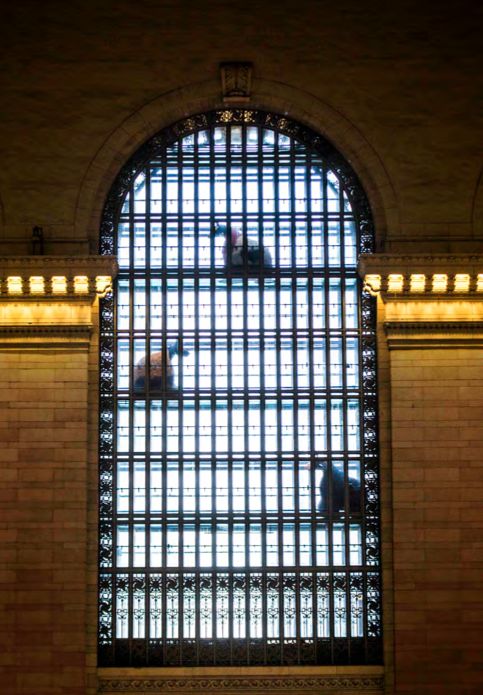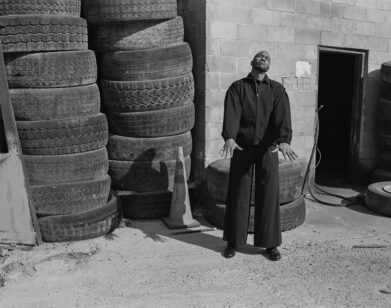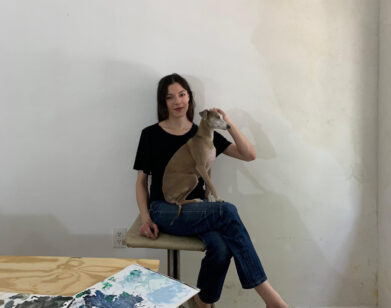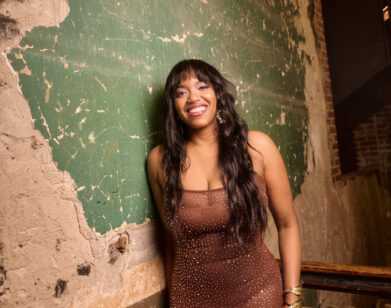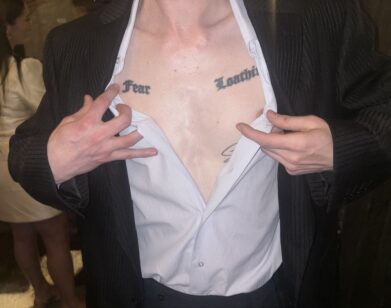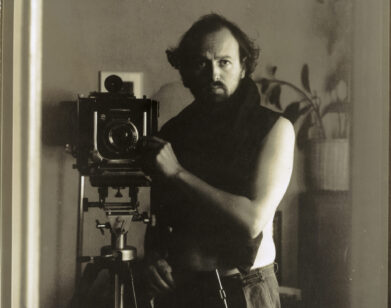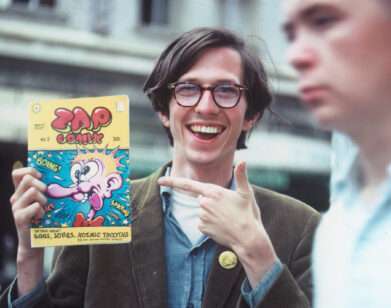Nick Cave’s Heard Dances Through Grand Central Station
If you’ve wandered through New York’s Grand Central Terminal over the past few days, do not worry. You’re not hallucinating. This week, from 11 am to 2 pm, Alvin Ailey dancers dressed in colorful, life-size horse costumes will dance to the beat of pounding drums in the station’s Vanderbilt Hall, transforming it into a land of wonder.
Part performance piece, part art installation, HEARD•NY comes from the imagination of artist Nick Cave (not to be confused with the reclusive musician and author also named Nick Cave). Already known in the art world for his electrifying soundsuits, Cave teamed up with the Metropolitan Transit Authority (MTA) Arts for Transit and Creative Time to produce his first work of public art in the Big Apple.
Interview caught up with the artist to discuss HEARD•NY, what it was like to stage such an ambitious project in Grand Central Terminal, and the meaning of it all.
ANN BINLOT: You’ve been busy the last few days.
NICK CAVE: It’s been great!
BINLOT: How was this project conceived?
CAVE: Creative Time had been talking to me about doing a project, and they were approached by the MTA (Metropolitan Transportation Authority) with Grand Central Station’s 100th Anniversary. The MTA had always wanted to do a project with me as well, so it was the perfect match at the perfect time.
BINLOT: Of all the places in New York you could have staged this performance, why Grand Central Station?
CAVE: I always had thought about bringing a performance, not really sure where they would be. It’s the most incredible space to work in. I’m there every day. It’s so extraordinary that it’s a different audience every day. You don’t know what’s going to happen until you do a show and just how committed they are in terms of support, and really rallying around the Alvin Ailey School. It has really been a remarkable experience.
BINLOT: Have you created horses before?
CAVE: No! With this project, I was thinking about Grand Central Station and how it functions and its role. There’s all these crossings, and people passing, going from point A to point B. I was thinking about that as a point of reference. Then I was thinking about a dream state, this place of imagination in our heads. And as an artist, just thinking about what is my sense of responsibility as an artist doing public work, and how can that inform the project. I was really thinking of getting us back to this dream state, this place where we imagine and think about how and how we exist and function in the world. With the state of affairs on the world, I think we tend not to take the time out to create that dream space in our heads.
BINLOT: Why horses?
CAVE: The idea of looking at early puppetry. As a kid, you could take your sock and put it on your hand and make a puppet—it’s really coming out of that headspace. Right on site, they’re changing in front of the audience and the moment they make that transformation. You don’t know when they got dressed. What is that moment when things shift and become believable? It was a form and image that I felt was very magical in that same sense.
BINLOT: You used materials from all over the world when constructing the costumes. Can you explain the premise behind HEARD•NY?
CAVE: The bodies of the horses are made of kinetic raffia. We were playing on the word “herd,” but we wanted “heard,” in relationship to sound. The sound is so incredible, in terms of how it’s orchestrated, and this collaboration with the musicians really becomes a piece in itself; it’s really spectacular. But then all of the horses have a face mask, and those are created by textiles and prints from all over the world—really speaking about the world unifying as a global whole. The interesting thing is that with the dancers partnering up as pairs, they are building their own horse characteristics. You find you’re having this amazing encounter with a stallion, or a horse that may be a show horse. It’s these characteristics that help support and build identity.
BINLOT: How was it to work with the Alvin Ailey School again?
CAVE: I had classes with Alvin Ailey that were affiliated with the University of Missouri, Kansas City, and then I did summer intensive in New York when I was in my undergraduate studies, so I do have a connection to that sort of practice. It was 60 students that we have to work with; and to find a company that really has that many students attending, it’s sort of a big demand. It really worked out in our favor to reconnect with Alvin Ailey and return to that relationship.
BINLOT: Why did you decide to mix it up and have different kinds of performances?
CAVE: It’s a performance that’s very isolated, so with the MTA and its restrictions and regulations, we really had to keep that in mind.
BINLOT: You’ve used dyed human hair, sisal, plastic buttons, beads, sequins, and feathers in your soundsuits before. Since these costumes were meant to move, did you have to use different materials?
CAVE: Yeah. When we’re doing sculptural work, then my material choices can be very broad in scope. But when it comes to performance work, we have to take a different approach. We have to look at the weight. We have to look at stress that is placed on the object. We have to design and be concerned about the physical body in these works. It was a lot of decisions that are made around the institution of the team, the material, the expanse of time that the physical body can move in these pieces in a progressive way.
BINLOT: What were the biggest obstacles you faced in producing HEARD•NY?
CAVE: It’s really coming into a public space, Grand Central Station, and working within these limitations of where can the performance be held. The flow of traffic and the movement has to maintain itself—we cannot interfere with that activity—and so it was interesting working under those sort of regulations. It’s amazing what’s happening. It’s more people than they had anticipated coming to the performances. They’re having to shut down one of the entrances in the station because of the amount of people that keeping showing up for the performances. I’m excited about it though.
BINLOT: Speaking of that, how was it working with the MTA on the logistics? Did they have any security concerns?
CAVE: Yesterday we had a meeting where they were going to increase security within the space as well because of the volume of people. I was told that this is a terrorist target, so they really have to take all these considerations. It’s amazing. They all take photographs. It’s interesting to see the attention, and it is stopping people moving through to take a moment and engage.
BINLOT: How do you feel each time when you see the audience react to the performance?
CAVE: Oh, my God. It’s amazing to think, because I thought, “Oh, I’m going to be at these every day, I’m going to go crazy.” I am telling you, it is unbelievable, and the kids are just—oh my, God—so emotional and so involved, and so connected. It’s unreal.
BINLOT: What’s next for you after this project wraps up?
CAVE: Ooh! I open a solo show at the Denver Art Museum in June. It’s going to be an exhibition of 50 new works. We’re looking forward to that exhibition; there will be a performance component at the end of June. We will go right back to the studio and be progressively in the middle of that. We’re working with three dance companies in Denver. The thing that’s nice is that, when we move about the country, we work with a different group of performers. If I can provide an experience for someone, that really becomes an amazing life lesson or revelation. It’s very much a part of what my beliefs are.
HEARD•NY RUNS AT GRAND CENTRAL TERMINAL THROUGH SUNDAY, MARCH 31. FOR MORE INFORMATION, VISIT THE CREATIVE TIME WEBSITE.

